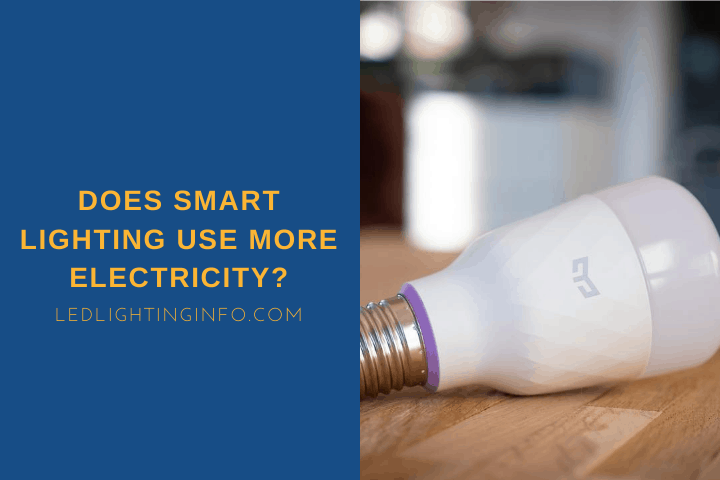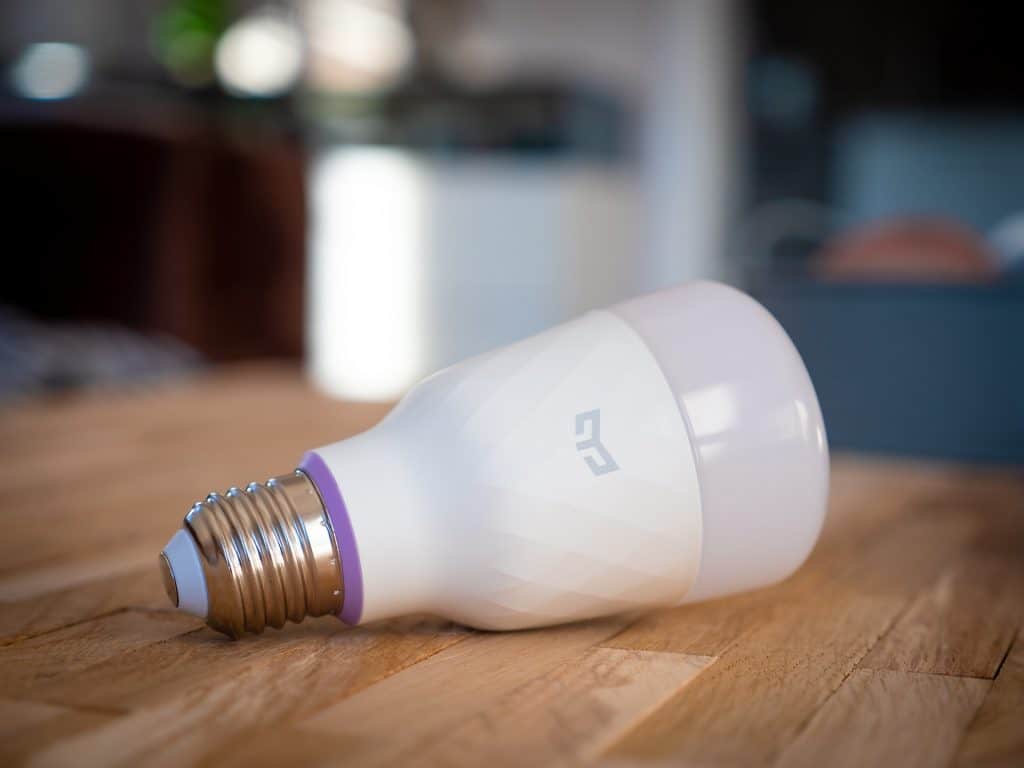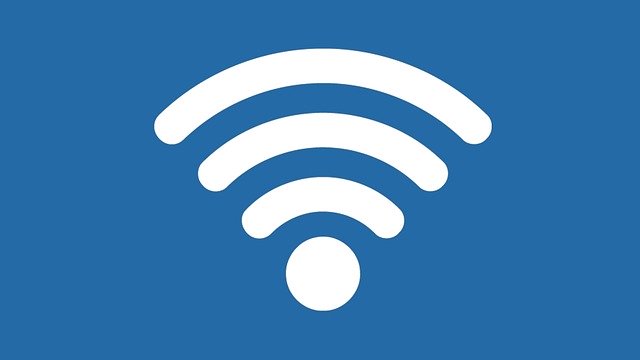When it comes to saving money, every little helps. Cents add up to quarters, and quarters add up to dollars. Before you know it, you’ve saved $100s with hardly any effort.
This is why many people choose to illuminate their homes with light-emitting diodes. Nobody wants to throw money away!
In recent years, the lighting market has developed even further with the introduction of smart LEDs. Smart lights are WiFi-enabled devices that can be controlled via a smartphone app or home assistant.
But the question on everyone’s lips is: are they energy-efficient?
Due to the innovative features and permanently-on status, smart LEDs use a tad more electricity than standard LED bulbs. However, their electricity consumption is still a lot lower than traditional light bulbs.
There’s an endless amount of benefits to smart LEDs. But if you’re conscious about your energy consumption, their efficiency rating will be make or break.
Join me on my quest to discover exactly how much electricity smart lights use. I’ve crunched the numbers, and I’ve found the answers. Keep reading to find out!
Do Smart LED Lights Consume More Electricity Than Standard LEDs?
By now, I’m sure you’re aware that LEDs are the most energy-efficient form of artificial light. They produce the same amount of light (if not more) as traditional incandescent, halogen, and fluorescent bulbs using much less wattage.
But where do smart LEDs fit into this? Are they more or less efficient than standard LEDs?
Well, let’s test this out by comparing the Philips Hue smart bulb to a standard Philips bulb (Amazon). The regular LED bulb uses 5 watts of energy to produce 550 lumens of light. The smart bulb, whereas, requires 7 watts of energy to produce 550 lumens of light.
So, as you can see, the smart bulbs’ electricity consumption is slightly higher. But how does this play out when it comes to cost?
To compute this, I’m going to use sust-it.net’s energy cost calculator. For this example, let’s say that I’m in the USA, and I use each bulb for 2 hours (120 minutes) per day.
For the regular 5-watt bulb, this equates to ¢0.11 per day. The smart 7-watt bulb, whereas costs ¢0.15 per day.
Over a year, this adds up to ¢40.15 and ¢54.75, respectively. So there’s a negligible difference between the two of ¢14.6.
This being said, it is only for one bulb. If we go with the average number of 40 bulbs per household in the US, we will get to a $5.84 bill difference, given that all bulbs are used for 2 hours a day.
The reason smart bulbs use more electricity is, well, because they’re smart. Unlike standard bulbs, they’re WiFi-enabled, Bluetooth-compatible, color-changing, and dimmable. As with any electrical device, the more features you add, the more power it requires.
Related: Do Smart Bulbs Work With Touch Lamps?
If you’re merely looking to save on energy costs, it’s better to purchase standard LEDs. However, if you want the added convenience and functionality, opt for smart LEDs.
Why Do Smart Lights Consume Electricity While Off?
Unfortunately, that’s not all. There’s one more thing that sets smart LEDs and standard LEDs apart: standby power.
You see, smart LED bulbs use a small amount of power even when they’re not emitting light. This is called vampire power, or a ghost load.
Essentially, smart LEDs are always switched on. The only way to switch them off is by disconnecting their power source completely.
Don’t worry, I promise it’s not as bad as it sounds.
In simple terms, smart LEDs require a small amount of electricity to maintain their connection with your home’s WiFi and/or smart devices. This is what enables you to turn them on remotely at a moment’s notice.
Think of it the same as when a TV is in standby mode, waiting for a signal from the TV controller to turn on.
Interestingly, vampire power is said to be responsible for a whopping 20% of the world’s electricity usage.
In a bid to counteract this, the International Energy Agency recently introduced the One Watt Initiative. This scheme aims to encourage manufacturers to reduce the standby power-use of their appliances to one watt or less.
How Much Electricity Is Consumed?
Understanding why smart bulbs create vampire power is relatively straightforward, but choosing whether to accept it is another matter.
If you’re keen to minimize your energy bills, you’ll want to precisely know how much a smart bulb costs while sitting dormant. The good news is that their economic impact is trivial, amounting to one or two cents per month.
Let’s do the maths.
To carry on from my earlier example, I’m going to talk about the Philips Hue smart bulb.
At full brightness, this bulb draws 7 watts of power. But what about its standby power consumption?
Research from various brands and types of smart bulbs indicates that most draw between 0.2 and 0.5 watts while in standby. This equates to 0.0002 and 0.0005 kWh (kilowatt-hours).
To put this into context, a standard AA battery could power 0.2 watts for approximately 15 hours. So it’s a minuscule amount of power.
At 0.2 watts, it would take 5000 hours for the bulb to use 1 kWh of power. 5000 hours is approximately 208 days.
Economically speaking, the average price of electricity in the U.S, according to NPR, is $0.12 per kWh. So if your smart bulb is permanently on standby, your electricity bill will increase by $0.12 over 208 days.
How much is this per month?
Well, there are approximately 730 hours in one month. 0.2 watts’ x 730 hours = 0.146 kWh per month. 0.146 kWh equates to approximately $0.01752.
In other words, if your smart bulb is permanently in standby and you never turn it on, your electricity bill will increase by $0.2 per month per bulb.
Also read: Can You Use Smart Bulbs Outside?
Does Turning The WiFi Off Turn The Bulb Off?
One or two cents per month may seem trivial, but if you have a comprehensive smart bulb array, it can soon add up.
What should you do if you no longer want to pay this extra amount? Will turning the WiFi off stop the bulb using extra electricity?
The short answer: no.
You see, turning the WiFi off will hinder the bulb’s functionality. You’ll no longer be able to control the bulbs via your smartphone or home assistants.
But this doesn’t turn the bulb off. The smart bulb will continue to use electricity as it tries to re-establish a connection with your WiFi.
The only way to eliminate this extra standby electricity is by turning the bulb off completely, i.e., by unplugging the fixture from the socket, or in our case, flipping the switch. But in doing this, you’re essentially turning a smart bulb into a dumb one.
Final Words
It’s fair to say that smart LEDs have transformed the realm of interior design in recent years. But there’s still a lot of uncertainty around whether they’re more energy-efficient than standard LEDs.
Hopefully, this article has clarified that while smart LEDs use more electricity, in the grand scheme of things, the difference is insignificant.
Have you tried smart lights in your home or workspace? Did you notice an impact on your energy bills?
I would love to know more about your experience, feel free to let me know in the comments section below.



